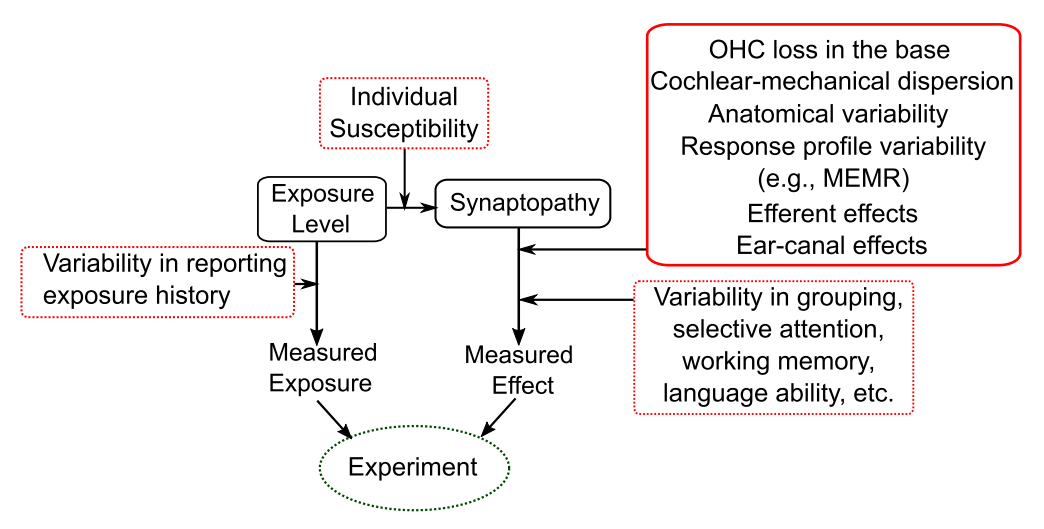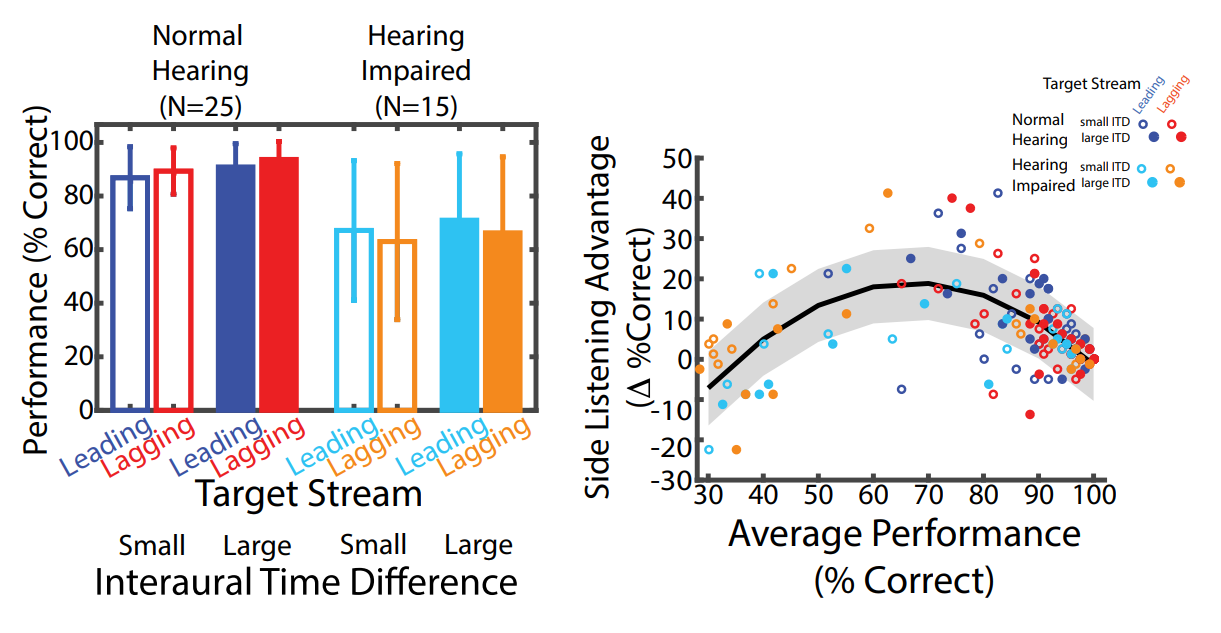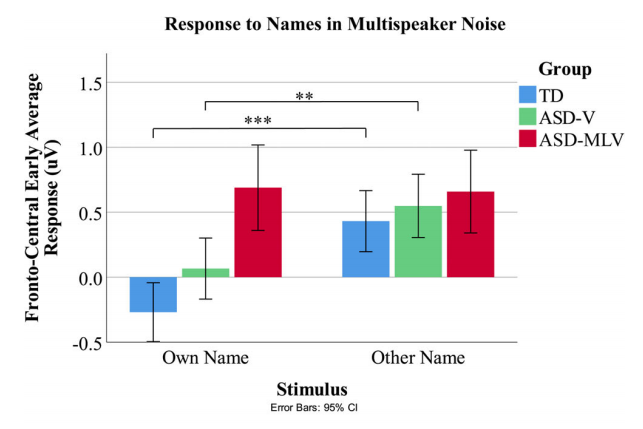Pathology and Disorders
Does cochlear synaptopathy affect perception in humans?
 In animal models, researchers have observed a loss of hearing function due to the death of outer hair cells in the cochlea, referred to as cochlear synaptopathy. This particular form of hearing loss does not affect absolute thresholds used for audiograms in clinical settings, but rather degrades the temporal cues of sound that inform the recognition of complex signals such as speech. In humans, patients come to hearing clinics with the complaint of hearing problems (particularly in noisy situations) but present with clinically normal audiograms. Additionally, even among healthy young adults there is significant and unexplained variability in performance on auditory tasks. While there are currently no noninvasive techniques to directly observe the outer hair cell function in human subjects, we believe that we will be able to identify potentially synaptopathic individuals by measuring performance on behavioral tasks with EEG imaging. As we’ve seen in other models, we seek to determine if this ‘hidden hearing loss’ has an impact on human populations.
In animal models, researchers have observed a loss of hearing function due to the death of outer hair cells in the cochlea, referred to as cochlear synaptopathy. This particular form of hearing loss does not affect absolute thresholds used for audiograms in clinical settings, but rather degrades the temporal cues of sound that inform the recognition of complex signals such as speech. In humans, patients come to hearing clinics with the complaint of hearing problems (particularly in noisy situations) but present with clinically normal audiograms. Additionally, even among healthy young adults there is significant and unexplained variability in performance on auditory tasks. While there are currently no noninvasive techniques to directly observe the outer hair cell function in human subjects, we believe that we will be able to identify potentially synaptopathic individuals by measuring performance on behavioral tasks with EEG imaging. As we’ve seen in other models, we seek to determine if this ‘hidden hearing loss’ has an impact on human populations.
Relevant Publications
- Bharadwaj H, AR Mai, JM Simpson, I Choi, MG Heinz, and BG Shinn-Cunningham (2019), “Non-invasive assays of cochlear synaptopathy—Candidates and considerations,” Neuroscience, 407, 53-66, doi: 10.1016/j.neuroscience.2019.02.031.
- Mehraei G, AE Hickox, H Bharadwaj, H Goldberg, S Verhulst, MC Liberman, B Shinn-Cunningham (2016). “Auditory brainstem response latency in noise as a marker of cochlear synaptopathy,” Journal of Neuroscience, 36, 3755-3764.
How does hearing loss impact attention and perception?
 text goes hear
text goes hear
Relevant Publications
- Dai L, V Best, and BG Shinn-Cunningham (2018). “Sensorineural hearing loss degrades behavioral and physiological measures of human spatial selective auditory attention,” Proceedings of the National Academy of Sciences, 115, E3286-E3295, doi: 10.1073/pnas.1721226115.
- Best V, J Swaminathan, N Kopčo, E Roverud, and B Shinn-Cunningham (2018). “A ‘buildup’ of speech intelligibility in listeners with normal hearing and hearing loss,” Trends in Hearing, 22, doi: 10.1177/2331216518807519.
- Shinn-Cunningham, B and V Best (2008). “Selective attention in normal and impaired hearing,” Trends in Amplification [invited submission for special issue on Auditory Scene Analysis], 12, 283-299.
How do neurological disorders impact listeners abilities to analyze complex scenes?
 Common neurological conditions such as autism spectrum disorder, Parkinson's disease, and attention-deficit hyperactivity disorder all can lead to atypical behavioural responses to sensory stimuli. As a research group we are interested in elucidating the sources of deficits in higher level cognitive function that lead to these altered responses. We do this by examining neural correlates and behavioural performance in cognitive tasks that require listeners to rely on typically leveraged sensory features. Both behavioural methods and electroencephalography are used to investigate impaired function due to neurological disorders.
Common neurological conditions such as autism spectrum disorder, Parkinson's disease, and attention-deficit hyperactivity disorder all can lead to atypical behavioural responses to sensory stimuli. As a research group we are interested in elucidating the sources of deficits in higher level cognitive function that lead to these altered responses. We do this by examining neural correlates and behavioural performance in cognitive tasks that require listeners to rely on typically leveraged sensory features. Both behavioural methods and electroencephalography are used to investigate impaired function due to neurological disorders.
Relevant Publications
- Schwartz S, L Wang, BG Shinn-Cunningham, and H Tager-Flusberg (2020). “Atypical perception of sounds in minimally and low-verbal children and adolescents with autism as revealed by behavioral and neural measures,” Autism Research, Autism Research, doi: 10.1002/aur.2363.
- Schwartz S, L Wang, BG Shinn-Cunningham, and H Tager-Flusberg (2020). “Neural evidence for speech processing deficits during a cocktail party scenario in minimally and low-verbal adolescents with autism,” Autism Research, doi: 10.1002/aur.2356.
- Abur D, AA Lupiani, AE Hickox, BG Shinn-Cunningham, and CE Stepp (2018). “Loudness perception of pure tones in Parkinson’s disease,” Journal of Speech, Language, and Hearing Research, 1-10.